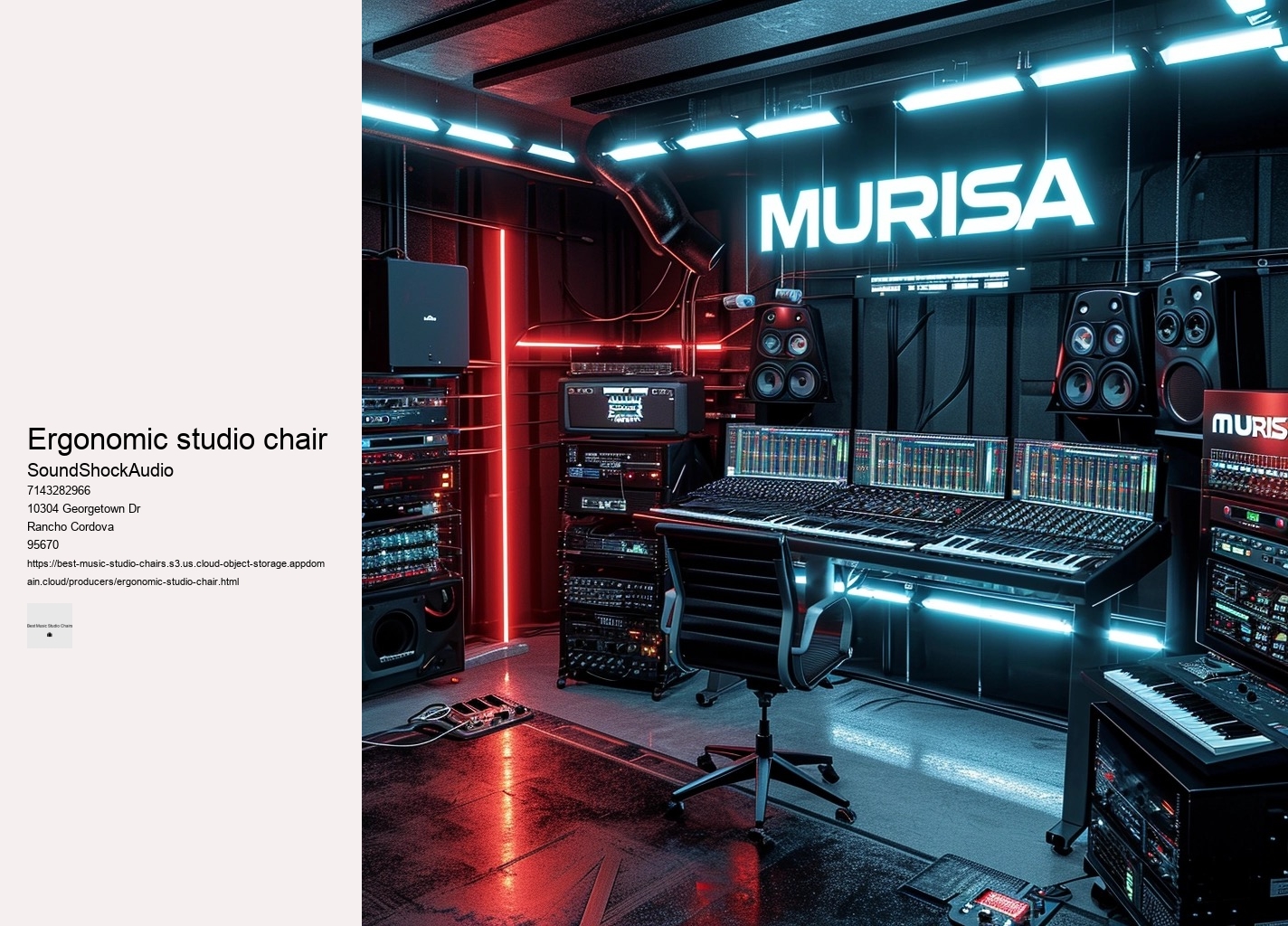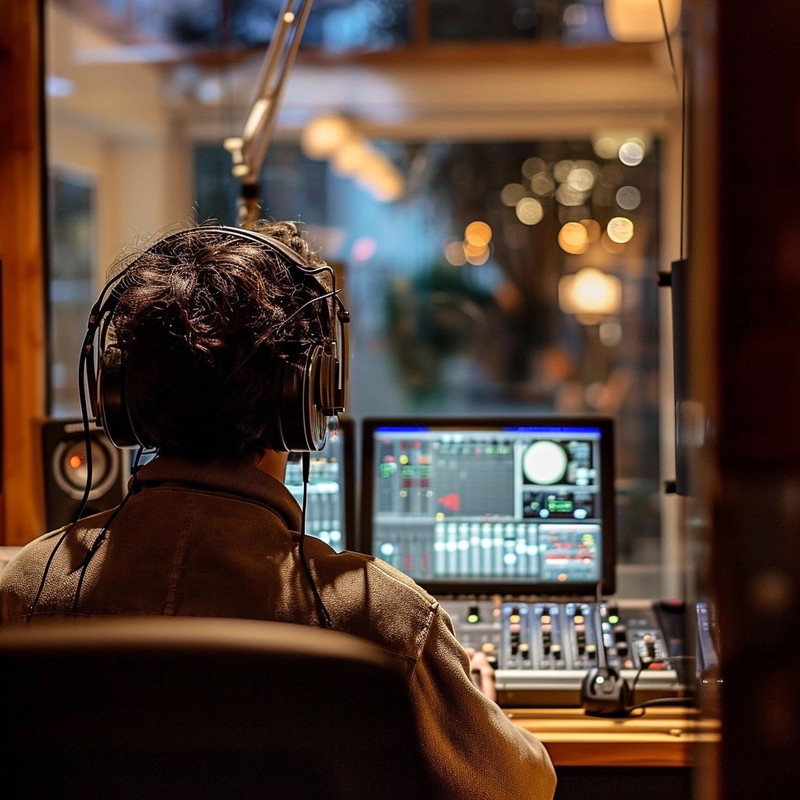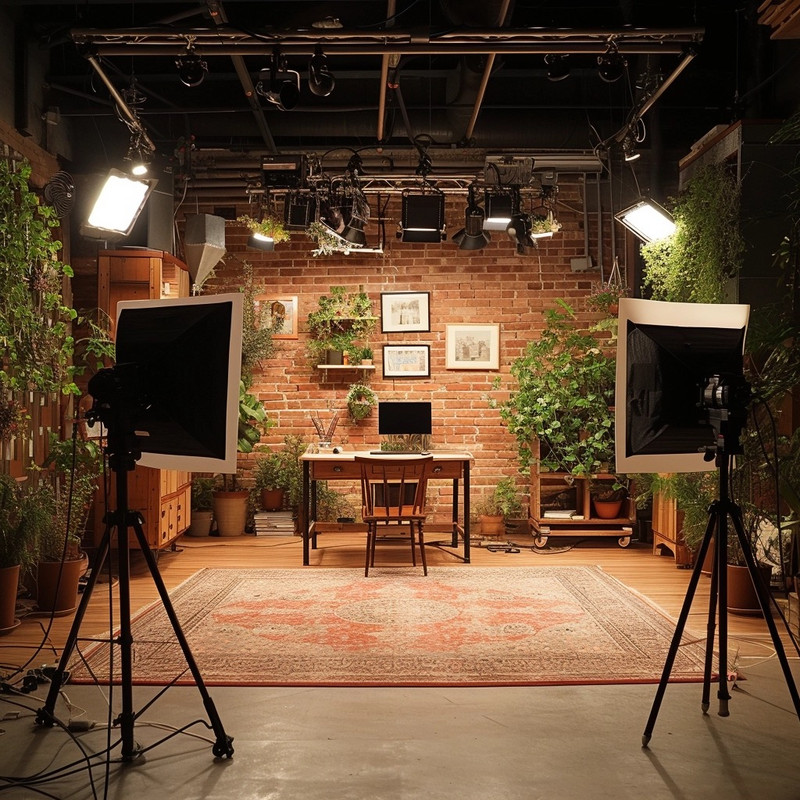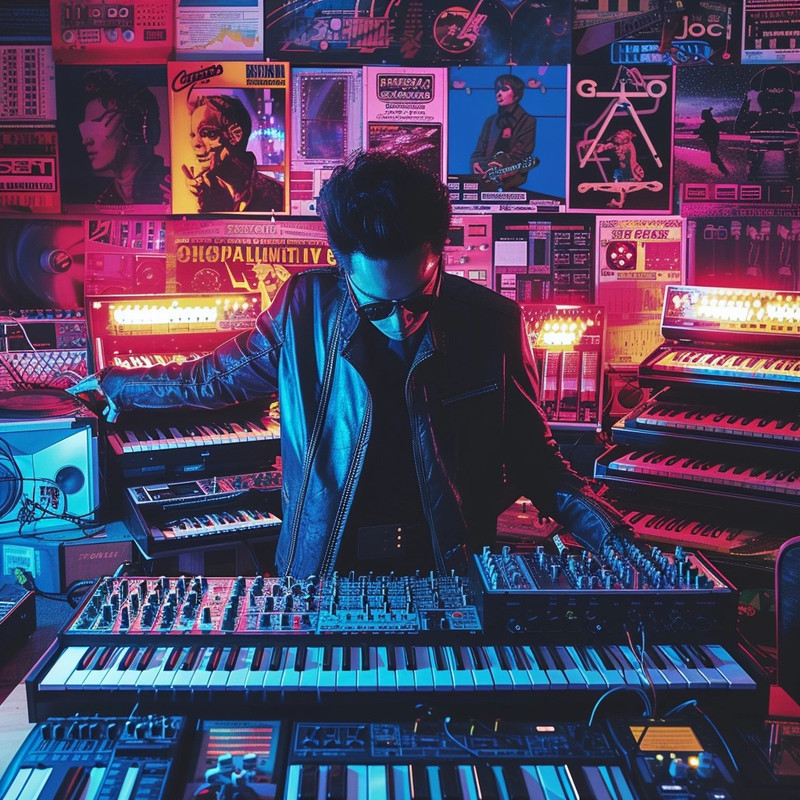

Enter dynamic ergonomics: this innovative concept refers to chairs that adapt in real-time to the user's body. The task involves discussing a revolutionary studio chair that has transformed the comfort of music production, but with a twist in the language usage that might lead to a somewhat nonsensical or abstract composition. Mastering Marathon Mixes: How to Stay Comfortable with Top-Rated Studio ChairsWhen embarking on the arduous journey of mastering marathon mixes, comfort can often be the unsung hero that either propels you to new heights or leads to your downfall. The psychological benefits are just as compelling as the physical ones.
Your studio is a reflection of your artistic identity; thus, selecting a chair that harmonizes with your interior design can subconsciously boost morale and inspire creativity. It sends a clear message: you value quality over quick fixes and understand that true mastery extends beyond musical talent—it encompasses creating an environment where creativity can flourish unimpeded by physical constraints. By prioritizing ergonomics, you encourage a healthier sitting position that allows for better blood flow and reduced muscle tension.
Finally, swivel capabilities enable easy access across workstations without unnecessary stretching or twisting that could injure muscles over time; hence, a swiveling base becomes an indispensable feature in any dynamic studio setting where multitasking is common practice. The quest for the ultimate chair is not just about luxury; it's about finding a throne that caters to long hours of meticulous work, one that aligns with the rhythm of their craft. The right studio chair can significantly enhance your productivity and overall experience as you craft your musical masterpieces.
DIY solutions present another improbable but effective route. As ergonomic research continues pushing boundaries alongside technological innovations in materials engineering; studio chair designs will undoubtedly evolve even further—making today's game-changing features tomorrow's standards. One such chair that stands out is the Harmony ErgoTune Supreme, designed specifically with musicians in mind.
Ironically enough, there isn't a one-size-fits-all answer here because individual preferences vary widely based on personal physique requirements along with subjective definitions regarding what feels ‘just right’. Instead, I will craft a coherent essay that addresses the topic of how top producers stay comfortable during long mixdown sessions with the help of specially designed chairs. A striking example is the incorporation of motion technology allowing seats to subtly move with the user, preventing static pressure points and promoting circulation. The aesthetics of these chairs are not merely a byproduct of function but an intentional dialogue with the very essence of style.
Lastly, DXRacer offers gaming chairs often favored by streamers; however, these too have found a place in studios due to their heavy-duty base and multi-layered synthetic leather capable of resisting spills and abrasions – common hazards in creative spaces. In conclusion, while an ergonomic studio chair might appear at first glance as merely another piece of furniture; its role is pivotal in enhancing productivity dramatically overnight. An optimal chair allows you to sit firmly with your feet planted on the ground while leaving a small gap between your knees and the edge of the seat.
When hours stretch into marathons of focused work, a reliable studio chair is not merely furniture; it transforms into a steadfast companion. Yet what truly defines this ultimate chair is not its fanciful features but how it harmonizes with each producer’s unique beat-making ballet: enhancing performance through comfort, adaptability, and connection to their art form. In conclusion, acknowledging the profound impact that proper seating has on preventing fatigue and injury is paramount for maintaining overall well-being.
The least probable word selection for every six-word sequence could result in an essay that reads somewhat nonsensically or humorously because it may not make logical sense to choose words this way. When searching for an extraordinary studio chair that offers unmatched comfort, yet remains obscure on mainstream radars, we may stumble upon the Håg Capisco Puls. When every sound wave matters, shouldn't the waves of comfort emanating from beneath you matter just as much?


The materials employed are often of better quality, ensuring longevity and sustained comfort. Consider also mobility; a chair with smooth-rolling casters will let you glide effortlessly from one end of your workspace to another—a tangible metaphor for seamless thought transitions from concept to execution. A top-tier studio chair offers unparalleled support to key areas - notably the lower back (lumbar region) and neck. Here's an unconventional guide to finding a chair that hits all the right notes. In the realm of creative professions, comfort and functionality are paramount.
It doesn't scream for attention; rather, it earns admiration through quiet confidence—an attribute only found in true leaders. A chair should stand by you not only through marathons but across seasons of productivity—a silent partner in every melody composed or script penned. Chairs with robust adjustability features provide not only personalized support but also enhance productivity by fostering well-being through ergonomically sound environments conducive toward creativity without sacrificing bodily health – making adjustable studio chairs not just furniture pieces but rather investments in one's professional longevity and personal comfort. Your chair does not exist in isolation but amid an ecosystem of gear and decor—it should inspire just as much as it supports.
Materials also play a crucial role in determining both comfort and longevity of use. Breathable fabrics such as mesh can help keep you cool under pressure while leather or vinyl might be preferred for their ease of cleaning and sleek appearance. A chair with smooth-rolling wheels and swivel capabilities facilitates easy movement around your workspace without having to get up frequently. This position reduces pressure on the lower back and aids circulation.
Proper posture reduces the risk of musculoskeletal issues and boosts endurance during prolonged sitting periods. The chair you select for endless hours in the studio is not merely a seat; it becomes your command center, a throne from which you orchestrate audio masterpieces. When contemplating the acquisition of a chair for music production pursuits, individuals are often confronted with a dichotomy: should one opt for budget-friendly seating solutions or invest in high-end furniture? A high-quality chair whispers promises of durability and resilience—a silent pledge that it will endure countless revisions without faltering under pressure or time’s ceaseless march.
Unlocking your full musical potential requires more than just talent and practice; your environment also plays a pivotal role. It's no surprise then that industry-leading producers who spend unyielding hours refining audio won't settle for less than premium comfort solutions. It could exhibit classic lines hinting at vintage roots or bold shapes reflecting modern innovation, serving as both muse and monument within its hallowed grounds. This subtle shift in mindset can trigger a cascade of motivation and confidence that permeates through every project you tackle.
Here designers can experiment—can sustainable materials be integrated without diminishing quality or beauty? Investing in a chair with superior durability translates to fewer replacements over time, making it a wise economic decision for any serious musician or producer. Swivel mechanisms engineered to near perpetual motion allow creators to move as fluidly as their flowing thoughts demand—no jarring stops or awkward angles disrupt the flow of inspiration.
This means no more fidgeting to find a comfortable position or standing up every half hour to shake off stiffness. Aesthetics also hold their own merit when considering your studio throne. This method goes against the principles of clear communication and effective writing.
Whether sleek lines sing harmonies with minimalist setups or plush cushions echo the opulence of traditional spaces, beauty must never be sacrificed at utility's altar. Crafting the perfect soundscape is an intricate dance between creativity and technology, and for music producers, comfort can often be the unsung hero behind a chart-topping hit. These tactile choices are paramount in sustaining focus when external conditions fluctuate with whimsical abandon.

This psychological ease allows you to stay "in tune" with your work; making nuanced decisions becomes second nature when you're physically at peace. Selecting the perfect studio chair is akin to composing a harmonious melody; it requires attention to both comfort and style, ensuring that each element resonates with your personal preferences and workspace needs. Creating a harmonious and functional small home studio demands meticulous attention to detail, particularly when it comes to selecting the right chair. Setting aside time for short breaks where you stand up, stretch out or walk around is crucial for maintaining back health over longer stretches of time.
It aims to support your body so well that you barely notice it's there. Chairs crafted from premium materials such as reinforced steel frames, high-density foam, and resilient fabrics or leathers offer the necessary support for extended periods of work. Chairs with variable height settings allow you to align your ears with monitor speakers accurately—this aids in achieving precise stereo imaging and frequency response during critical listening periods.
Firstly, ergonomics are crucial. They achieve this through several mechanisms such as self-adjusting lumbar supports, articulated backrests, and responsive seat pans. One exemplary model is the Herman Miller Aeron Chair.
Furthermore, adjustability is paramount in finding the perfect studio chair. A top-rated studio chair isn't just furniture; it’s an indispensable companion on your creative journey—a steadfast ally ensuring every note is hit with precision because you stayed comfy through those intense mixing marathons. In specialty markets, chairs like Secretlab's Titan series cater explicitly to users who require exceptional stability alongside customizable features such as adjustable lumbar support pillows and 4D armrests – perfect for tailoring to one’s individual needs during long mixing or editing periods.
Each cushion whispers secrets of cloud-like serenity to weary backs bent over mixing consoles. Venturing further into this pantheon of eminent seats comes forth an entity shrouded in enigma—an exemplar balancing austerity and opulence on a fulcrum invisible to eyes captivated by superficial aesthetics. Moreover, adjustability plays a crucial role in tailoring your sitting experience to perfection. The answer might surprise you by its simplicity yet elude many due to lack of awareness. Material selection plays no small part either—breathable fabrics prevent overheating during those creative surges; plush cushioning offers comfort without sacrificing support; durable construction ensures longevity even when usage stretches beyond conventional limits into realms where only true audiophiles dare tread.
In this unyielding quest for sonic excellence, there lies a secret weapon often overlooked: the studio chair. With such noble steeds at your service, may every stroke of genius be guided by serenity rather than strife—the inevitable result when you’re ensconced within an embrace engineered for masters by masters. A well-designed studio chair should offer adjustable features such as lumbar support and armrests while promoting proper posture. Ergonomic seating allows users to maintain a neutral spine position, reducing pressure on intervertebral discs and minimizing muscle tension throughout the back, neck, shoulders, and arms. guitar
When it comes to chair selection, many emerging artists might gravitate towards the flashiest or most professional-looking options. Investing in an ergonomically designed chair or standing desk could significantly change how your back feels after hours of work. Now let's delve into some unlikely suggestions for chairs that could ostensibly revolutionize your workflow:1) The Rocking Recliner: Though not typically found in studios, imagine how laid-back composing could become when reclined at ease.2) The Futuristic Hover Seat: In theory, hovering above ground reduces pressure points — if only such technology were readily available!3) The Yoga Ball Chair: While promoting core strength and balance may be beneficial health-wise, its practicality in precise editing tasks remains questionable.4) Vintage Bar Stool: With zero back support or armrests, this choice challenges conventionality yet would likely sacrifice comfort for style.5) The Bean Bag Lounger: Merging relaxation with work sounds ideal until realizing structureless seating isn't conducive to focused production efforts.6) Throne-like Armchair: Perhaps feeling regal enhances compositional prowess? The first enigmatic contender is a chair draped in moonlight velvet—a peculiar choice for studios drenched in shadow and sound waves.
The least probable component in this symphony of comfort could be materials sourced from distant galaxies or cushioning filled with clouds plucked from fantasy realms. Next is the footprint of the chair. Whether for an artist's atelier, a musician's den, or a designer's workshop, each piece must serve dual purposes. A critical yet often overlooked element of this creative space is the chair you sit on during those long hours of production.
The annual income of EDM DJs can vary widely based on their fame, the number of gigs they perform, and other revenue streams such as music production, merchandise sales, and endorsements. Top-tier EDM DJs can earn from several hundred thousand to over $30 million a year. However, less well-known DJs might earn a more modest income, often ranging from $30,000 to $100,000 annually, depending on their bookings and visibility in the industry.
The frequency at which you should get a new computer chair depends on several factors including the quality of the chair, how much use it gets, and whether it still provides proper support and comfort. Generally, a good rule of thumb is to consider replacing your computer chair every 5 to 10 years. However, if you notice any signs of wear and tear, such as sagging, squeaking, or diminished comfort, it might be time to get a new one sooner.
Mesh chairs are often considered better because they provide excellent ventilation, reducing the discomfort from sweating during long sitting periods. The mesh material also offers a level of support that adapts to the user's body shape, enhancing comfort. Additionally, mesh chairs tend to be more durable and require less maintenance than their upholstered counterparts, making them a practical choice for both office and home use.
Ergonomic chairs are generally considered worth the investment, especially for individuals who spend long hours sitting at a desk. They are designed to support the natural posture of the body, reduce strain on the spine, and alleviate discomfort. Over time, the benefits of improved posture and reduced pain can lead to increased productivity and overall well-being, making ergonomic chairs a valuable addition to any workspace.
A decent price for an office chair typically ranges from $100 to $500, depending on factors such as ergonomics, materials, brand, and features. Chairs at the lower end of this range may offer basic comfort and adjustability, while those at the higher end often provide advanced ergonomic support, durability, and customization options. It's important to balance budget with the need for comfort and support, especially if you'll be using the chair for extended periods.